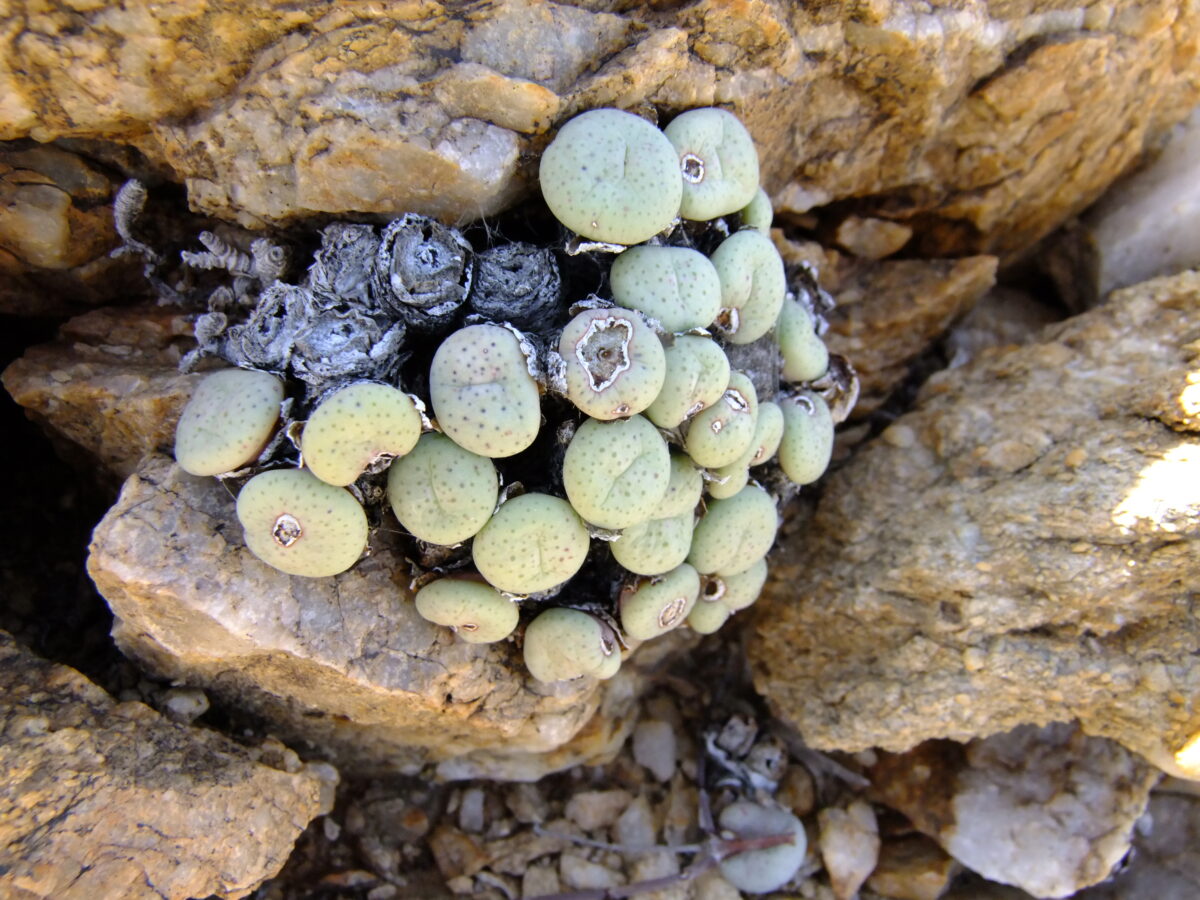In April and September of this year, Herta Kolberg and her team from the Namibian Chamber of Environment (NCE) traveled over 5,000km to conduct their second and third field surveys. The April study focused on the Kunene Region and September they targeted the species found in the extreme south-west of Namibia. Building on the first highlight from NCE published in October 2023, we are pleased to share these continuing first person accounts of the surveys from Herta, and intern Sofia Amakali with input from team members Secilia Uusiku and Tyrone Tholkes.
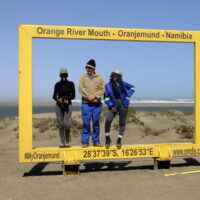
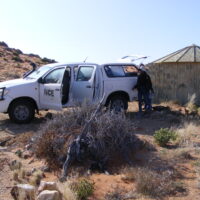
KOAKOVELD FIELD REPORT (06 April 2024 – 21 April 2024) by Sofia Amakali
We embarked on our second field trip to the Kunene Region on the 6th of April 2024. In preparation we already had the updated slides inventories and scanned slides, and we still had to use the Quarter Degree Square system with potential localities to guide us in locating the target species. This time we decided to camp, which came as a lesson from the previous trip, to allow us to be more flexible in terms of how we work and the areas where we would be working. This was ultimately a good idea because it allowed us to navigate around the unpredictable rainfall patterns in the areas we had anticipated to work. We located a total of 99 target species and we managed to get pictures of 60 near-endemic species, hooray! We also photographed 10 endemic species as well as four alien plants and 77 with no specific status. In total we thus documented 156 species during the 16 days in the field and for which we traveled more than 3,000 kilometres. It is really exciting that we added two floral species records new to Namibia that had been known only from Angola until now. There may even be a species new to science, but we still need to verify this.
The day we traveled, we started off by making observations on the sides of the roads, based on the localities that we had. We worked in and around areas such as Dinasaurs’ Tracks Camp, Etoto, Ruacana, Epupa, Swartbooisdrift, Okonguati, Etengua, Opuwo, Kaoko-Otavi, Marienfluss, Orupembe and Sesfontein. Some of the areas had received some good rain, whilst others were seen to be quite dry and we did not have much to work with.
During the trip, we captured photos of our target species, collected and correctly pressed voucher specimens, and also had the honour of training an NBRI technician and student, Mr Tobias Kambongi, and Mignon Nekuta respectively, on correct procedures to follow when pressing plants. In addition to this, we were also trained by Herta Kolberg and Leevi Nanyeni (from NBRI), on how to make proper description notes for when one is collecting specimens. Lastly, one of my highlights on this trip was the 4X4 driving training that I received for 3 consecutive days. It was a very humbling yet fruitful initiative and I am very grateful that I was fortunate enough to undergo this training, as I learnt how to maneuver around obstacles when driving in the field.
Challenges and inconveniences
Most of the koppies along the road from Kamanjab to Ruacana were now fenced into commercial farms, so we had limited access to them. In addition to this, we had to set up and take down camp almost every day which was time consuming. Also, the condition of some roads was very bad. These factors contributed to our slow progress. We might instead have targeted a smaller area and stayed for several days in one camp, investigating the surroundings thoroughly on foot.
Overall, the trip was fully successful and it was a delight to have been a part of the amazing team. We made remarkable progress so far and, in my capacity as an intern, I will continue to learn as well as make an impactful contribution towards the success of this project.
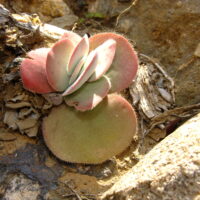
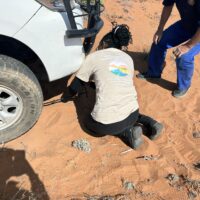 THIRD FIELD TRIP REPORT (04 September – 20 September 2024) by Herta Kolberg & Sofia Amakali
THIRD FIELD TRIP REPORT (04 September – 20 September 2024) by Herta Kolberg & Sofia Amakali
The near-endemic plants project in Namibia embarked on its third field trip from 4 to 20 September 2024. Species in the extreme south-west of the country, on the border with South Africa, were targeted, because this would generally be the peak flowering time in this area that receives rain in autumn and winter. This year, however, there was very little rain and therefore limited vegetation development. We decided to go to the field anyway, because according to previous experience, one can always find at least something.
In preparation for the trip we started off with a list of 146 species, but this was reduced to 133 when we received some photos from the National Botanical Research Institute (NBRI) just prior to setting off. Mapping earlier records, we realized that we could expect to find most of the targets by concentrating on three areas: farm Namuskluft and surrounds, Obib mountains and fountain and Aurus mountain. The latter two are located in the Tsau ||Khaeb National Park, which in turn falls within the restricted diamond mining area. This meant that, on top of the annual plant collecting permit we do have, we had to go through a lengthy process of obtaining special permission to enter the diamond area and a permit to work in a national park. Just a few weeks before this fieldtrip our colleagues from the NBRI informed us that they could no longer accompany us, so we had to make alternative arrangements for a fourth person to join us. For safety reasons in this remote area we were going in two vehicles, meaning one person would then always be alone in a car. Sofia found an interested former fellow student, who turned out to be an excellent choice!
After sorting out some difficulties with one of the vehicles and some of our equipment, we – Tyrone, Sofia, Secilia and Herta – set off on 4 September. On our long way south, we saw that the summer rainfall areas had hardly any annual vegetation and kept our fingers crossed that the winter rainfall areas would be better. After checking in with the conservation staff at Rosh Pinah, we set up our first camp on Farm Namuskluft in relative luxury – water on tap and a bathroom. We spent four days here exploring and finding many of our targets. The drought of the past 12 years has decimated most of the plants on the plains, even old and big succulents. In the gorges and on the mountain slopes is where we found what we were looking for, but hardly any annuals had appeared and only the odd perennials flowered. But, since we had no photos of these species, we were not too sad about the lack of flowers or fruit. Here we crowned Secilia our “spotter of the first order” – she had the great ability to always be the first to spot what we were looking for.
After refueling and stocking up on water and food, we departed on our adventure into the diamond area. Not having been there for nine years, everything looked very different! Here the effects of the drought were clearly noticeable. Obib fountain, which generally forms a pool of a few square meters, was bone dry. Many dead plants were visible and annuals occurred only in small patches. Still, we got some photos, although taking these became increasingly difficult because of the very strong wind that blew most of the day. The nights were very cold and the mornings wet from fog so we were really grateful for the basic huts we could use for sleeping and cooking – here and at Aurus.
From Obib we moved on to Aurus mountain. Again the ravages of drought were clearly visible, even some old quiver trees on the mountain slopes were dead. Only at higher elevations we found the plants we were looking for. Because of the strong winds some of the tracks were covered up by sand dunes and one day we took a huge detour. In the end, this turned out not to be a bad thing, as we found some interesting gorges with more plant growth. The weather still remained unpleasant so we could only take close-up photos in the early mornings.
On our way south, as we passed through Aus, we saw that there were some plants flowering and decided to spend some time here on our way back. The vegetation was by no means as lush as it was last year, but we did manage to tick a few more species off the list. As we were blown off our feet at the coastal town of Lüderitzbucht during our first fieldtrip, we planned this time to overnight there so that we could benefit from the early morning’s absence of wind. That’s not how it turned out! That wind was blowing from when we arrived until we left the next day. We took some photos, but close-ups were out of the question.
Back in Windhoek, after a total of 2215 km driven, we still need to process all our efforts. We collected 100 (exactly!) herbarium specimens, mostly vouchers for our photos. These still have to be identified, but provisionally we managed to photograph 54 target species (plus others). Two collections seem to be either new species or new records for Namibia. Sofia got some more practice in off-road driving (close to 900 km and changing a flat tyre) while Secilia was a great field assistant with her pleasant personality and quick grasp of what this fieldtrip was all about. Tyrone was, as always, invaluable as driver and solver of technical hick-ups. And Herta? Well she came better prepared so that finding and identifying plants in the field was not as much of an issue then during the first fieldtrip. Overall, the fieldtrip can be described as very successful. In total for the project there are now less than 160 species out of 618 left for which we need photos. We are unlikely to find many of these for various reasons and we will now intensify our search for photos from other sources for these.
Secilia Uusiku:“Over the course of two weeks the trip took us through diverse habitats as we searched for the near-endemic plants. What stood out for me on this trip were the plants’ remarkable adaptations to their surroundings, as each discovery revealed the rich biodiversity of the region, making the experience both enlightening and inspiring. The trip deepened my understanding of biodiversity and the importance of conservation, leaving me with lasting memories and a profound respect for the natural world.”
Sofia Amakali:“One of the challenges I could say we encountered was the fact that it was very dry this year. We managed to find what we could but there wasn’t sufficient rain for some of the plants to flower, or maybe we went too late? Overall, the trip was a great experience.”
Tyrone Tholkes:“If anyone asks me to go back to the diamond area tomorrow, I will have to think very hard about it……..that WIND and COLD!!”
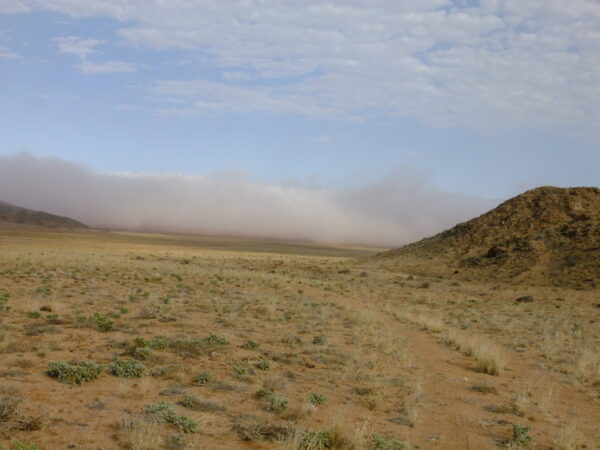
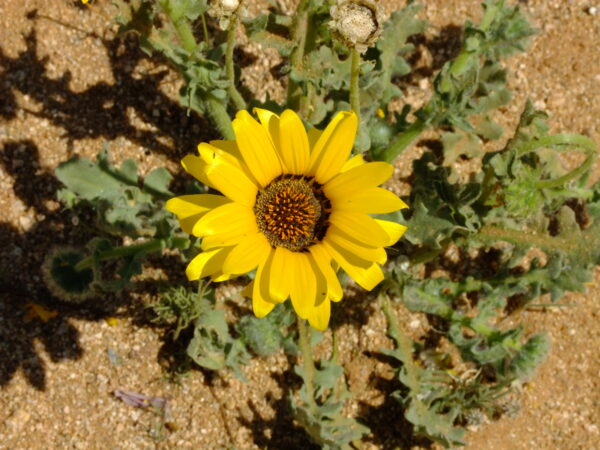
=================================================================================
Read more about JRS grantee Namibian Chamber of Environment here.


